
views
Tanks with their inherent triad of firepower, mobility and protection now characterised as lethality, manoeuvrability and survivability operate effectively at all three levels; ‘tactical’ as part of combined arms teams where the capabilities of the tank are amplified and its vulnerabilities mitigated, at the ‘operational’ level where they have the ability to seize key terrain features, sustain tempo and apply constant pressure on the enemy and at the ‘strategic level’ where power can be projected by placing tanks in locations from they can both deter the enemy as well as generate offensive options to degrade and destroy the enemy’s fighting potential. They have the ability to ‘constantly create criticalities’ for the adversary and Indian tanks contributed significantly in all these realms during the decisive Indian victory in 1971.
Brief Background
At the time of partition, Indian Armoured Corps was divided between India and Pakistan, with 12 Regiments remaining in India and six going to Pakistan. However, within each Regiment, Squadrons were transferred based on the class composition. The Armoured Regiments were soon at the forefront of conflict in J&K with Central India Horse advancing towards Rajouri and 7th Cavalry fighting a series of actions with their Armoured Cars and Stuarts including the capture of Zoji La.
In 1962, AMX-13 tanks of 20 LANCERS were airlifted to Chushul to counter the Chinese. However, the focus now shifted to the northern borders and by 1965, Pakistan had more Armoured Regiments than India, yet the famed First Armoured Division carried out an offensive in Shakargarh Bulge and two (Independent) Armoured Brigade was instrumental in foiling Pakistani designs in Khem Karan where 3 Cavalry with its centurions earned the name of being ‘Patton Wreckers’.
Post-1965 War, the focus shifted towards modernisation and expansion of mechanised forces and apart from new raisings, there was also induction of new equipment. Hence in 1971, India had a mix of six Regiments of Vijayantas, four Centurions, one AMX-13, three T-54s, eight T-55s, two PT-76 and one Regiment equipped with Jonga-based SS11B1 missiles. There were also 6 Independent Squadrons holding some of these tanks apart from Shermans and Armoured Cars. It was a mix of equipment which operated in various terrains all across our borders but delivered decisive results.
Eastern Front
The salience of geography worked to India’s advantage amongst many other factors in the East. There were 3 Armoured Regiments 45 Cavalry and 69 Armoured Regiment equipped with PT-76 tanks and 63 Armoured Regiment with T-55 tanks. In addition, there were 3 Independent Squadrons including 5 (Independent) Armoured Squadron (PT-76) commanded by Major (later Lieutenant General) SS Mehta which was involved in three major operations namely Akhaura, Ashuganj and the crossing of the mighty River Meghna while 1 (Independent) Armoured Squadron led the advance of 301 Infantry Brigade and capture Mian Bazar. They also destroyed three gunboats and a barge carrying troops.
45 Cavalry was the first Armoured Regiment to be blooded in battle in this war on November 21, 1971. They fiercely fought in 29 actions including the famous Battle at Garibpur with 17 battalions of 4 Mountain and 9 Infantry Divisions, the last two actions being on December 16. Major Narag was awarded the Maha Vir Chakra during the battle of Garibpur. 63 Cavalry with T-55 was the only Regiment operating with four separate formations in three different sectors and Captain (later Lieutenant General) JS Varma recalls being moved by rail even before December 16 to Western Command due to a visualised adversity being built up there.
69 Armoured Regiment which was part of 33 Corps had the unique opportunity of accepting the surrender of Lieutenant Colonel Bukhari, Commanding Officer Pakistan 29 Cavalry.
It is also stated that due to the peculiarities of equipment operations of Regiments inter-twined, at times in mixed grouping but practically always complimentary to each other, the Armour Advisor Brigadier (later Major General) Gurcharn Singh Sandhu coordinated the plans initially.
Militarily, it was a brilliant example of manouvre warfare being used to target the minds of the adversary causing him to capitulate despite having adequate resources to hold on much longer. The capture of Dacca had not been planned initially. It was Lieutenant General Sagat Singh who played the masterstroke of threatening Dhaka using heli-landings and amphibious tanks of the Independent Squadron of 63 Cavalry to cross the mighty Meghna River and 2 Para air dropping at Tangail and 1 Maratha Light Infantry linking up at the Poongli Bridge which put fear in the minds of the Pakistani military hierarchy and was the last nail in the coffin.
The use of tanks in East Pakistan posed many problems due to the riverine terrain with the large numbers of rivers and streams which required to be crossed. Many innovations were required by engineers and close infantry-tank and air cooperation was achieved, giving success.
Western Front
The Western Front including the Line of Control (then called the Ceasefire Line) covering 3,323 kilometres, was far more varied than the border in the East. Apart from the mountains and hills, there was the riverine terrain and plains of Punjab which gave way to canals and semi-developed terrain, followed by vast open stretches of the Thar Desert and finally the marshes of Kutch.
India’s strategy in the West was primarily status quo, aimed at preventing loss of territory, in order to deny Pakistan a bargaining chip for negotiations at the end of the war. Indian defence in the West required limited attacks across the border into West Pakistan where feasible and preparing strong defences where Pakistan had the terrain advantage.
The original plan was to launch offensives in Chhamb and the Shakargarh Bulge. A major advance was to take place in the desert along the railway line towards Naya Chor. A smaller push in the direction of Rahimyar Khan was also possibly considered. However, Chhamb was where the Pakistanis launched their offensive on December 3, Deccan Horse and 72 Armoured Regiment, the youngest Armoured Regiment to be blooded in war, displayed gallantry, resolute grit and determination which led to the destruction of enemy armour and stymied their offensive on the West bank of the Munawar Tawi.
Central India Horse and 8 Cavalry were tasked for the defence of Jammu which included capturing an area called ‘The Chicken’s Neck’ to remove the threat to the strategically important Akhnoor Bridge. This task was achieved by December 7. Unfortunately, after that, these troops were utilised mainly for defensive actions and a pre-war plan of a push towards Sialkot was cancelled.
11 Corps
A very large portion of Indian armour was deployed in the 11 Corps Zone. In addition to the two Divisional Regiments, 66 Armoured Regiment and 3 Cavalry, 14 (Independent) Armoured Brigade which had five Regiments was also deployed in this sector. In Northern Punjab, between Amritsar and Lahore, the 15 Infantry Division captured Pakistani enclaves along the Ravi River at Dera Baba Nanak in which the 71 Armoured Regiment gave effective support and Burj where the 66 Armoured Regiment played a major role. 64 Cavalry also fought a large number of defensive battles in this area.
7 Infantry Division Sector was the scene of several dramatic struggles for enclaves along the Sutlej. This is where Pakistan tactically surprised its own troops and captured Husseini Wala despite stout resistance by 15 PUNJAB. On December 5 and 6, 3 Cavalry was part of the operations to capture Sehjra Bulge.
Another area where Pakistan achieved tactical surprise was in Fazilka where they managed a foothold across the Sabuna Distributary in Foxtrot Sector. However, due to continuous counterattacks by own troops which included T-54 tanks of 18 Cavalry, the lodgment remained contained. Incidentally, Beriwala Bridge was the area where the 70 Armoured Regiment lost their Commandant, Lieutenant Colonel Dewan, who was killed soon after the Regiment had achieved their first hit with a missile.
Shakargarh Offensive
1 Corps commanded by Lieutenant General KK Singh who had won his MVC as 1 Armoured Brigade Commander in Shakargarh in 1965 was tasked for an offensive in Shakargarh Sector on December 5, 1971, after it became clear that the Pakistani offensive in this sector was not materializing.
The Indian offensive was spearheaded by the 54 Infantry Division and 16 (Independent) Armoured Brigade, commanded by Brigadier (later General) Arun Vaidya, MVC, the Centurion Brigade had two illustrious Regiments which had fought in the same sector in 1965, Hodson’s Horse and Poona Horse. An epic tank battle took place at Basantar in which Second Lieutenant Arun Kheterpal who, on December 16, refused to abandon his tank as his gun was still functioning and went on to destroy several Pakistani tanks was awarded the Param Vir Chakra and Brigadier (later General) Arun Vaidya, MVC a Bar to his Maha Vir Chakra while the Commandants of both Hodson’s Horse Lieutenant Colonel (later Lieutenant General) RM Vohra and Poona Horse Lieutenant Colonel (later Lieutenant General) Hanut Singh were awarded Maha Vir Chakras.
To quote Lieutenant General WAG Pinto, “The Battle of Basantar was one of the greatest tank battles ever fought by the Indian Army. After about eight hours of bitter fighting, tanks of the Poona Horse had destroyed two Pakistani Armoured Regiments”.
The other thrust 39 Infantry Division reached about four kilometres from Shakargarh, but an attack on the town was not launched. Skinners Horse was involved in the capture of Harar Kalan and 7 Light Cavalry was committed in operations without respite from December 5, 1971. The Regiment fought against enemy tanks operating from well-prepared defences with extensive minefields and destroyed 22 enemy tanks.
16 Cavalry was responsible for holding defensive positions on the flanks of the Corps offensive and advanced towards Shakargarh as also assisted in the attempt to assault across the Bein River. Scinde Horse under Lieutenant Colonel (later Brigadier) Sukhjit Singh was successful in capturing Malakpur, where in less than an hour, eight M 48 Pattons were destroyed. Its Commandant was also awarded the Maha Vir Chakra.
Tough armour battles were fought, resulting in major tank losses for Pakistan and the near decimation of Pakistan’s 8 (Independent) Armoured Brigade.
The Armoured Division
India had one Armoured Division in 1971 compared to Pakistan, which had two. Designated as the Army Headquarters, it had moved with complete secrecy from Jhansi-Babina and remained on a tight leash in the area of Faridkot-Malout throughout the operations.
Commanded by Major General (later Lieutenant General) Gurbachan Singh, also known as Buch, the formation was equipped with Vijayantas and was in a heightened state of operational readiness to the extent that all troops even slept with their boots on, with absolute emphasis on camouflage and concealment. There was a multitude of options regarding its employment but it remained ‘a threat in being’ in a tense standoff with Pakistan’s Army Reserves South and prevented any misdemeanour by them.
Southern Command
20 LANCERS, apart from two Independent Armoured Squadrons, were located in Southern Command. In early December, the Regiment was concentrated on the Kishengarh axis for the proposed offensive to Rahim Yar Khan, a critical communication centre. However, the Pakistani offensive towards Longewala on December 4 resulted in a change of plans. A vicious tank battle took place between a far superior T-59 and a small lightweight but skillfully handled AMX-13 and 6 (Independent) Armoured Squadron with T-55 tanks which resulted in pushing the Pakistanis across the border. Despite being completely out-gunned by a mechanically robust and advanced T-59 the AMX-13s covered up to 200 km in most difficult terrain. Air also played a major role in the ‘battle’ destroying many Pakistani tanks.
In the Barmer sector, it was the T-55s of the 3 (Independent) Armoured Squadron that played a major part in the capture of Naya Chor and Parbat Ali. 6 (Independent) Squadron having moved and fought for six continuous days in Longewala was pulled back to Jaisalmer on December 11, 1971, re-deployed to Khokhrapar (Sindh, Pakistan) and was also placed under 11 Infantry Division.
Conclusion
At a time in history when the relevance of the tank, a versatile weapon platform, is increasingly being questioned based on its performance in the Armenian-Azerbaijan and Russia-Ukraine conflicts, due to the proliferation in the array of ground and air anti-armour systems to include the unmanned aircraft systems, loitering munitions, precision artillery, antitank guided missiles, and electromagnetic spectrum considerations, the mechanised forces still have the ability to decisively shape combat and generate shock action, paralysing the enemy’s will to fight as demonstrated in 1971.
In spite of the changing face of warfare, we need to draw appropriate lessons from the 1971 War which reveal that the advantages tanks bring to land warfare are outweighed by vulnerabilities that new technologies can pitch against them. The tank’s value as a national power symbol that contributed to India’s decisive victory on December 16, 1971, still endures.
What clearly stood out was that the Indian soldier, be it on land, sea or air, fought relentlessly with indomitable courage, grit, bravery and professionalism in every single battle. There is no equivalent to the Indian soldier anywhere.
The author is an Army veteran. Views expressed in the above piece are personal and solely that of the author. They do not necessarily reflect News18’s views.










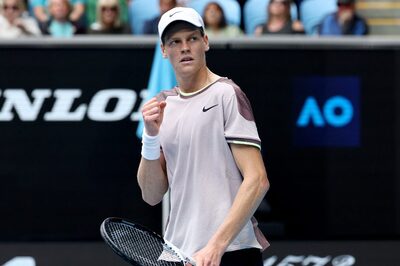
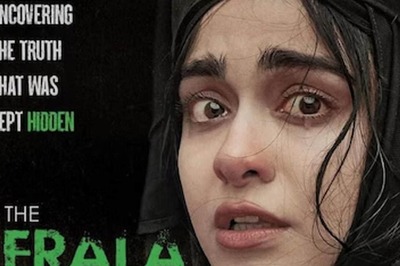
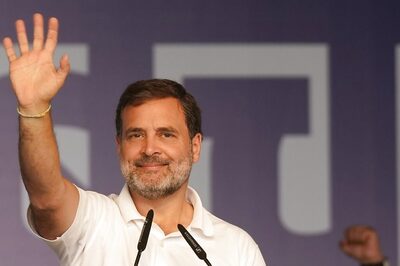

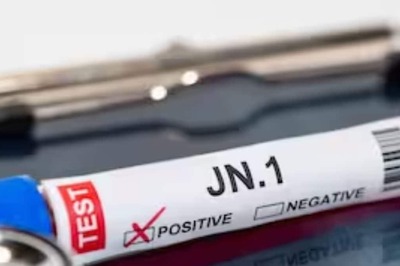



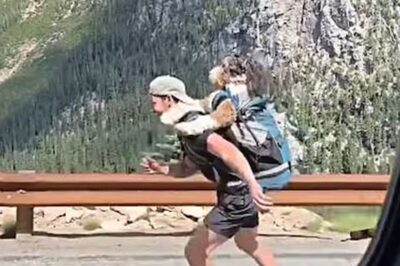
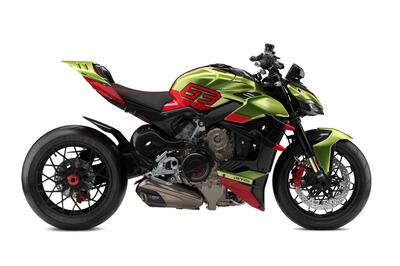
Comments
0 comment